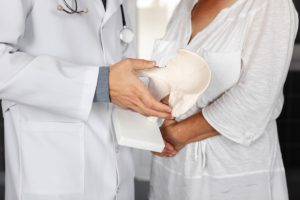 CVMG is proud to offer bone density testing to anyone undergoing CT testing for other reasons. For example, those patients who are having CT testing for chest, abdomen or other examinations may now also have their bone density accurately tested from these examinations.
CVMG is proud to offer bone density testing to anyone undergoing CT testing for other reasons. For example, those patients who are having CT testing for chest, abdomen or other examinations may now also have their bone density accurately tested from these examinations.
The majority of patients with osteoporosis are not identified or treated. The concept of using CT for bone density assessment is to capture 92% of patients at risk who are not currently tested.
There are several groups of people who should consider bone density testing:
- All women aged 65 and older
- All postmenopausal women below age 65 who have risk factors for osteoporosis
- Women with medical conditions associated with osteoporosis
- Men aged 70 or older
- Men ages 50-69 with risk factors for osteoporosis or medical conditions associated with osteoporosis
There are many risk factors and conditions associated with osteoporosis. Some are:
- Family history of osteoporosis
- Smoking and excess alcohol use
- Patients who suffer a fracture that is suspicious for osteoporosis (due to weak bones)
CT scans provide a wealth of data beyond the specific clinical indication for imaging. While there are over 50 million people undergoing CT each year in the United States, this provides a great opportunity for additional health screening. It is important for people to get screened early for bone density as it is a preventive opportunity to introduce other interventions if BMD loss is seen early before the age of recommended osteoporosis screening.
In the past, osteoporosis would be suspected only after you broke a bone. By then, your bones could be weak. A bone density test enhances the accuracy of calculating your risk of breaking bones. Doing a bone density test (QCT) is a fast, non-invasive exam performed on a CT scanner. The advantage of CT acquired bone density is it’s specified for osteoporosis and osteopenia of the spine as well as its seamless integration into existing imaging without additional radiation or inconvenience. It has the potential to take advantage of an at-risk population already undergoing medical testing for other conditions. It allows doctors to look for low bone mass and monitor the effects of bone mass therapy in patients undergoing treatment.
There are many causes of osteoporosis and they are not necessarily related to age:
- Anorexia nervosa
- Abnormally low levels of sex hormones
- Kidney disease
- Certain gastrointestinal disorders.
The time is now for patients and doctors to be proactive and test for bone density regardless of the patients’ age. The test is FDA approved and is a proven guide to identify diagnosis and initiate therapy.
